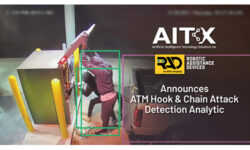Drone Crash at White House Underscores Security Gap
The FAA has banned the use of commercial drones, though the agency is drafting proposed rules at the behest of Congress.

The quadcopter drone that crashed on the White House grounds early Monday (Jan. 26).
WASHINGTON – The intrusion by a recreational drone early Monday onto the White House lawn exposed a security gap at the compound that the Secret Service has spent years studying but has so far been unable to fix, according to the Washington Post.
The episode came just four days after lawmakers examining White House security had been warned by a panel of experts that the Secret Service’s inability to identify and disable drones remained one of the leading vulnerabilities at the complex, sources told the newspaper.
Just after 3 a.m. Monday (Jan. 26), the drone flew at a low altitude over the south grounds of the White House without setting off alarms and was spotted by a Secret Service officer standing guard.
RELATED: Look Out for Camera Drone Integration in 2015
The “quadcopter” device, approximately two feet in diameter, then crashed on the southeast corner of the property, prompting a lockdown at the complex until the device was examined and determined not to pose a danger. Officers and agents with flashlights scoured the complex and surrounding area for clues, according to the Washington Post.
A man called authorities roughly six hours later to report that he was a recreational operator and had mistakenly crashed the drone. He said he did not mean to fly it onto the White House grounds, according to the Secret Service.
The incident is thought to be the first time that a drone had penetrated the White House perimeter. The incident immediately caught the attention of lawmakers and counterterrorism officials. It also spotlighted what has been an ongoing source of anxiety within the agency tasked with protecting the White House and, more broadly, among government officials in charge of protecting nuclear power plants, military bases and other sensitive areas seen as vulnerable to potential attack from drones.
A quad copter is a remote-controlled device lifted and propelled by four rotors and is widely sold on the Internet. Its prices vary from $25 to $3,000 and some can fly as high as 2,500 feet.
RELATED: Drones Are No Longer Flying Under the Radar
Most recreational drones, like the one that crashed on the White House grounds, weigh only a few pounds and lack the power to do much harm. But Department of Homeland Security and Secret Service officials have studied the potential that these devices could be modified to carry explosives or weaponry, according to the Washington Post. Larger models that can carry payloads of up to 30 pounds are available on the market and are expected to become more common.
Small drones have violated the highly restricted airspace near the White House and the Capitol before without attracting public attention. According to Federal Aviation Administration (FAA) records, authorities arrested an unidentified man on Aug. 19 after he crashed a drone into a tree in Freedom Plaza, just east of the White House.
On July 3, a Secret Service patrol detained a person who was flying a quadcopter about one block from the White House grounds. People have also been nabbed in recent months for flying drones near the Capitol and the Lincoln Memorial.
At the White House, a proposal for a higher fence, along with already added surveillance cameras and sophisticated environmental sensors, has been aimed at making the presidential residence more secure in the wake of a series of security lapses that have proved embarrassing for the Secret Service, including an intruder making it deep into the house in September. And antiaircraft missiles have been in place for years to guard against airplane attacks.
But officials said the Secret Service does not have the ability to easily identify and stop a typical drone, the Washington Post reported.
Most models are too small to appear on radar and are not equipped with electronic transmitters that broadcast their location.
Also, federal law prohibits the use of any device that could be used to jam or interfere with the GPS signals that drones rely on for navigation.
Unlike regular aircraft, drones used for noncommercial purposes are not affixed with registration numbers and pilots are not required to obtain a license. As a result, it is extremely difficult to track down the owner of a rogue drone unless the operator is fiddling with the remote controls in plain sight.
One official familiar with internal discussions told the Washington Post the Secret Service is “still trying to work through this, how to defend against them.”
If you enjoyed this article and want to receive more valuable industry content like this, click here to sign up for our FREE digital newsletters!

Security Is Our Business, Too
For professionals who recommend, buy and install all types of electronic security equipment, a free subscription to Commercial Integrator + Security Sales & Integration is like having a consultant on call. You’ll find an ideal balance of technology and business coverage, with installation tips and techniques for products and updates on how to add to your bottom line.
A FREE subscription to the top resource for security and integration industry will prove to be invaluable.







